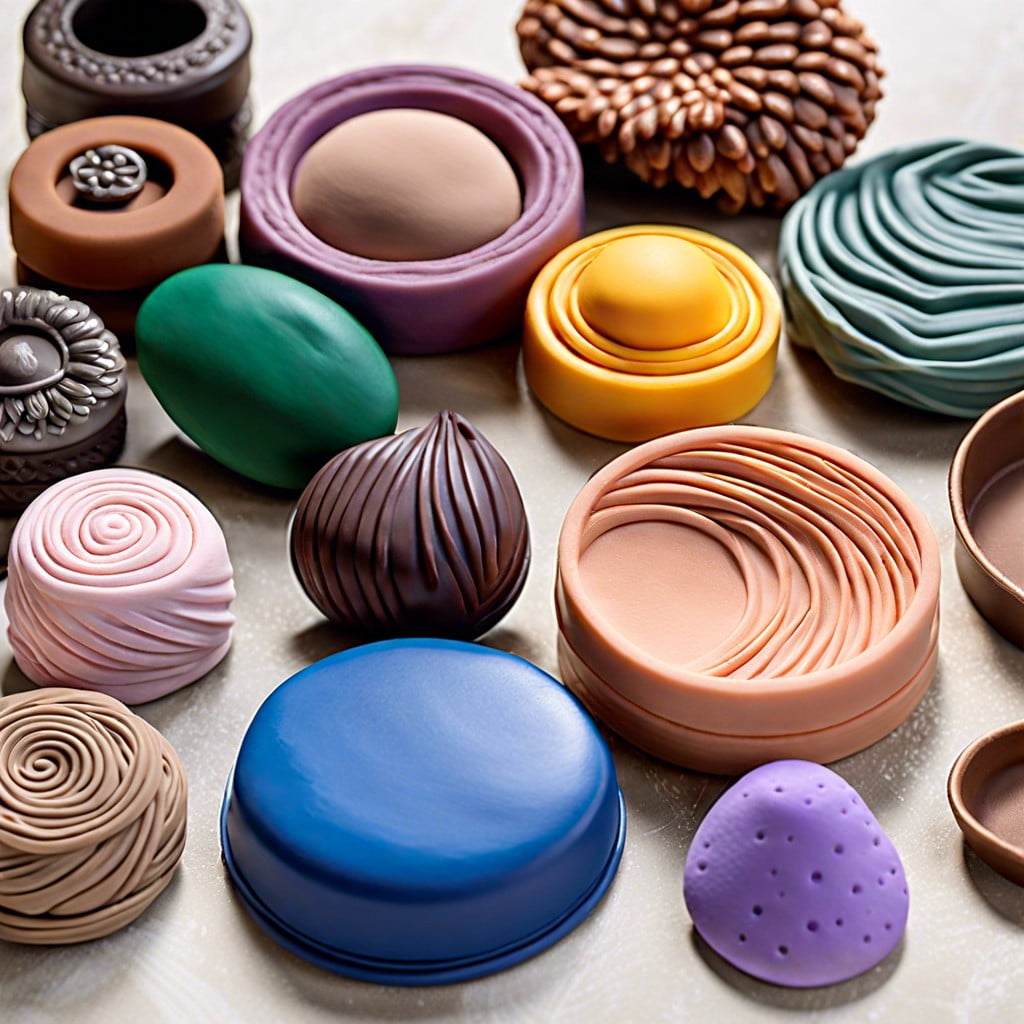Learn what to look for when selecting Sculpey polymer clays for your crafting projects, ensuring you find the right texture, color, and strength for your needs.
Key takeaways:
- Sculpey polymer clays are versatile modeling materials for crafting.
- They are made from PVC mixed with plasticizers, making them pliable.
- Sculpey clays can be baked in a home oven for accessibility.
- They are durable, can be sanded, drilled, carved, and painted.
- Sculpey clays come in different types for various uses.
Overview of Sculpey Polymer Clays

Sculpey polymer clays are versatile modeling materials popular among artists and hobbyists for creating a wide range of items, from jewelry to home decor.
They are made from polyvinyl chloride (PVC) mixed with plasticizers, which makes them pliable and easy to work with.
Unlike earthen clays, which require a kiln, Sculpey clays can be baked and hardened in a regular home oven, making them accessible for personal use.
Their softness and ease of conditioning, coupled with their ability to hold fine details, make them a favorite for intricate projects.
Once cured, Sculpey clays are durable and can be sanded, drilled, carved, and painted, allowing for endless creative possibilities.
Composition and Properties
Composed primarily of polyvinyl chloride (PVC) and plasticizers, Sculpey clays transform from a pliable material to a hard, durable finish when baked.
Key to their versatility is the ability to blend colors, create textures, and manipulate shapes before curing.
Unlike air-dry clays, they don’t shrink or crack, ensuring the end product maintains its original form.
When cured properly, Sculpey clays are also heat resistant and can be sanded, drilled, or carved post-baking for further refinement.
Non-toxic and available in a range of consistencies, they cater to both beginner crafters and professional artists alike.
Varieties of Sculpey Polymer Clay
Sculpey polymer clays come in a range of consistencies and colors, each tailored for specific uses:
– Original Sculpey: Soft and pliable, it’s ideal for beginners and is easily shaped. – Sculpey III: Available in vibrant colors, this type is best for crafts and jewelry, and it’s known for its softness and ease of use. – Premo Sculpey: With remarkable strength after baking, Premo is favored by professional sculptors and artists for its durability and ability to hold fine details. – Sculpey Soufflé: Lightweight and suede finish make it perfect for jewelry making; it’s also strong and self-supporting. – Super Sculpey: The choice for realistic doll making, its translucent beige-pink tone mimics skin and captures intricate details well. – Sculpey Liquid: A versatile liquid form that can be used as an adhesive, a grout for embedding objects, or a translucent decorative finish.Each variety caters to different skills and techniques, from intricate figurines to chic homeware.
Curing Process for Sculpey Polymer Clays
Sculpey polymer clays transform from a pliable material to a hardened form through curing, which is essentially a baking process. For successful curing, follow these guidelines:
- Preheat your oven to the recommended temperature, typically between 275°F (135°C) and 300°F (149°C), as indicated on the packaging.
- Place your sculpted item on a baking surface, such as parchment paper or a ceramic tile, to ensure even heat distribution and prevent sticking.
- Bake for 15 minutes per quarter inch of thickness. For thicker pieces, a longer baking time may be required, keeping within the temperature guidelines to avoid burning.
- Use an oven thermometer to verify the oven’s temperature, ensuring accuracy; polymer clay does not cure properly at incorrect temperatures.
- After baking, allow the piece to cool down gradually to room temperature; sudden temperature changes can lead to cracking.
Curing correctly solidifies the polymer clay, giving your creations durability and permanence.
Applications and Projects
Sculpey polymer clays are a favorite for crafters and artists due to their versatility. They can be molded into detailed figurines, which is a popular use. Jewelry makers often create beads, pendants, and earrings with intricate designs using Sculpey. Home decor items such as vases, picture frames, and coasters take shape from these colorful clays, providing a custom and handcrafted aesthetic.
For those looking to personalize their items, Sculpey clays are perfect for embellishing or creating unique designs on items like pens, key chains, and phone cases. The clay also proves useful in crafting miniatures, which are essential to dollhouse enthusiasts and tabletop gamers. Additionally, Sculpey is employed in educational settings, aiding in the development of motor skills and creativity in children through enjoyable hands-on activities.
Recap




